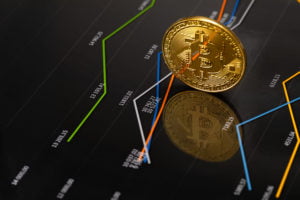Tokenization, by the most popular definition a form of transforming the value of business into digital resources, evokes more and more interest among entrepreneurs. Tokenization may be particularly important for entities that are considering alternative paths to VC or Business Angel to obtain financing for the development of their companies. The post-pandemic crisis and the new reality faced by business founders may encourage them to delve deeper into the subject, especially in the context of scarce funds of traditional investors. The company's tokenization often provides an easier and quicker opportunity to raise funds for further investments. Is this a solution worth considering? Where to start in order to tokenize your business? In this article we present 8 steps to implement the whole process together with specific examples of the tokenized projects.
Preliminary analysis
Make a preliminary analysis to assess your company's financial needs. Specify what you want to raise money for. Identify your target group, competition and market and decide if it is prospective enough. Describe your business or product and consult it with blockchain experts. Answering the question - to whom your issue should be directed - will also allow you to undertake the first analyses related to a later marketing campaign.
Choice of the type of issue and legal form
An important issue is the choice of the type of blockchain tokenization and legal form of the issue. A number of solutions are available, including ICO (initial coin offering), STO (security token offering) and ETO (equity token offering). ICO does not guarantee any ownership rights to the token buyer, and the issue and purchase of the offered tokens can be done almost entirely anonymously. STO and ETO, on the other hand, secure the purchaser through legal solutions, thereby transferring shares in the form of the purchased token. Thanks to the verification of both companies and investors they provide greater security for each party. They are in a way hybrid solutions - a combination of cryptic ICOs with more traditional investment fundraising.
Token economy
The next step is to identify the so-called token economy, which defines the type of emission. It consists of a number of elements:
Define a target, minimum and maximum amount to be collected within the issue. It is important to have an understanding of economic law. Choose the appropriate jurisdiction or law firm that will guide you through the process of establishing a company and a bank account in a given country, taking into account specific administrative requirements. The Nextrope team cooperates with law firms specialising in this area, so you do not have to waste time looking for top-notch lawyers specialising in tokenization.
Decide in which currencies customers can buy tokens. Will they be just cryptic currencies (specify which ones) or will they also be traditional currencies? The most common solutions are ETH, BTC, USDC and USDT. Depending on your preferences, the implementation will be more or less time-consuming.
Companies often lend tokenization on their infrastructure as part of IEO (initial exchange offering). This approach is unfortunately very limited and is not suitable for more legally complicated solutions. The main obstacles for companies considering IEO tokenization are primarily:
- Sharing revenue with another revenue broker.
- Loss of potential to build their own community.
- Problems with handling sensitive data.
Decide within which model the tokens you emit will be functioning. Options include the standard ERC20 or the new ERC1400 format. The first one guarantees that the tokens will not differ from each other in any way. The second one makes the tokens non-fungible. Each of them is unique and marked with a serial number.
Determine the benefits of purchasing your tokens to buyers and how large the token circulation will be on the market.
Start cooperating with a tax and financial advisor, who will develop the most optimal financial constructions for you. At Nextrope we cooperate with many advisors and we will be happy to connect you with them.
KYC/AML
Take care of KYC (Know Your Customer) and AML (Anti-Money Laundering) processes. These are two key elements in the entire tokenization process. The first one is a legal procedure, obliging legal entities (in this case you) to identify their customers and obtain true and accurate information required to receive funds interested in your business. The second one means taking action to verify the origin of the funds received. It is important that the investor platform you plan to use is integrated with KYC and AML service providers. This is the case with solutions offered by Nextrope.
Your needs and expectations
Discuss with your team of specialists what range of services you need. At Nextrope, you can expect not only technological support, but also consultations and preparation of the strategy of the tokenization process. Your platform will be fully personalized for your needs and requirements in relation to the tokenization itself. You will receive a fully customized landing page and an extensive, personalized administrator panel. You will have access to all the statistics, data and KYC verification at your fingertips, in the most intuitive place.
Project's White Paper
Create a fully comprehensive White Paper of your project, based on the advice of the experts' team. Remember to describe the developed token economics in detail. If several dozen pages of the document is a challenge for you, the Nextrope business team is ready to take part in the process of writing the White Paper and help you describe all the most important features of the project.
Marketing Campaign
Once the technical part is ready, develop and start a marketing campaign. Take care of a responsible approach to marketing. Pay attention to the appropriate commission system designed for your customers. Create a loyalty system, withdrawing bonuses to users on the amount paid. Build, motivate and manage your community. Make sure that information about your issue is available on all ICO/STO/ETO listing sites. Participate in industry conferences and focus on publishing your own content and producing industry reports. Showcase the human side of the blockchain-based business by organizing live and video conferences in social media and collaborating with industry influencers.
Further development
Usually, after the issue of your tokens is completed, the monitoring by the team providing technological solutions will end. Do not let this happen to you. Take care of the further development and long term development of your product as well as contact with the community - to continue to expand your business capabilities and resources. Good luck!
Nextrope.com is a software house focused on FinTech solutions market. Our team has already conducted over 10 tokenization processes, both in Poland and abroad. We are happy to help your company with tokenization using blockchain technology. Click here and tell us more about your project.
Nextrope Insights is a weekly newsletter on Fintech. You’ll receive market analysis on Blockchain, AI, Crypto, and other Fintech sectors every week! Our newsletter is subscribed by VC investors, startup founders, and industry experts. Yet you’re more than welcome even if you just started learning more about Fintech. You can join it here.
 en
en  pl
pl 











